Monastery of Saint Stepanos in Julfa, Iran
The Monastery of Saint Stepanos, located in the picturesque region of Julfa, Iran, is one of the most historically significant religious sites in the country.
Located in the green valley near the Aras River and close to the Armenian border, this medieval monastery has played a pivotal role in the religious life of the Armenian community in Iran. It is dedicated to Saint Stepanos, the first Christian martyr, and stands as a testament to the deep roots of Christianity in the region.
The monastery holds immense importance within the Armenian Apostolic Church and was recognized as a UNESCO World Heritage Site in 2008, acknowledging its cultural and historical value. Its strategic location and well-preserved architecture make it an essential stop for those interested in both religious history and medieval art.
Saint Stepanos Monastery Historical Significance and Architecture

The Monastery of Saint Stepanos traces its origins to the 9th century, during a period when the Armenian Church played a vital role in shaping the cultural and spiritual landscape of the region. Built in the heart of the Julfa region, it was a center of religious activity and a refuge for Armenian Christians, particularly during periods of political instability.
During the Safavid era in the 16th century, the monastery gained prominence as part of the Armenian enclave in Iran. The Safavid rulers granted certain protections to the Armenian community, allowing the monastery to flourish as a place of worship and pilgrimage. Its remote location near the Iranian-Armenian border made it a key site for cultural and religious exchange.
Religious Role
Saint Stepanos Monastery in Jolfa holds profound religious significance for the Armenian Christian community. Dedicated to Saint Stepanos, the first Christian martyr, the monastery serves as a major pilgrimage site for Armenian Christians in Iran and beyond. Its role as a spiritual center has made it a focal point for religious ceremonies and observances, particularly during the annual feast days of Saint Stepanos.
Architectural Features
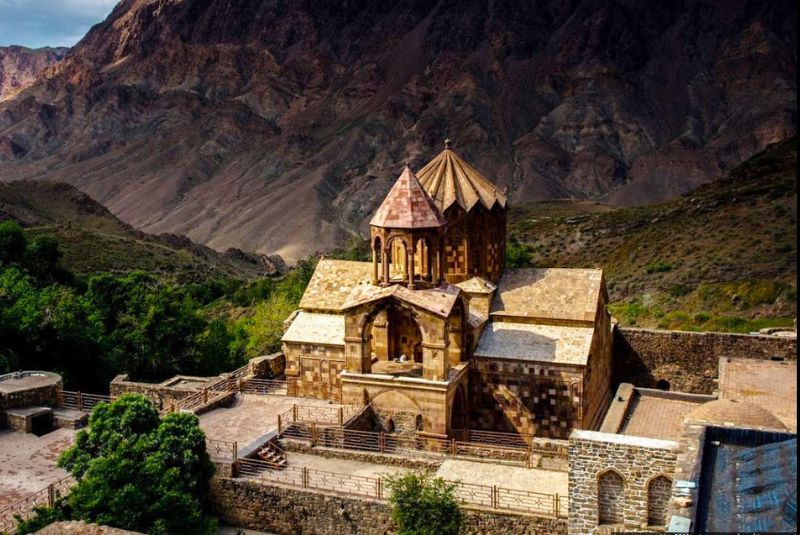
The architecture of the Monastery of Saint Stepanos reflects a unique blend of Armenian and Persian influences. The structure is marked by its distinctive cylindrical bell tower, crowned with a cross, and the centrally placed dome that dominates the complex. These elements are typical of Armenian ecclesiastical architecture, yet there are clear Persian stylistic features present in the intricate stone carvings and the ornamental detailing on the exterior walls.
The stone façade of the monastery showcases masterful craftsmanship, with detailed reliefs of biblical scenes and geometric patterns that decorate its walls. One of the most striking features is the main church entrance, framed by elaborate carvings of angels and saints, reflecting the religious and artistic traditions of the time.
Restorations
Over the centuries, the Monastery of Saint Stepanos has undergone several restorations to preserve its structure and artwork. Significant restoration work was done during the Qajar period in the 19th century, ensuring that the site remained intact despite natural wear and occasional damage from earthquakes.
Recent efforts by Iranian authorities, in collaboration with the Armenian Church, have focused on preserving the delicate frescoes and stone reliefs that adorn the interior and exterior of the monastery. These restorations ensure that visitors can still appreciate the artistry and historical importance of this ancient religious site today.
Saint Stepanos Monastery Location and Accessibility
The Monastery of Saint Stepanos is located in the scenic Jolfa region, near the border of Armenia in East Azerbaijan province, Iran. Nestled within the lush valley along the Aras River, the monastery is situated about 15 km west of the town of Julfa. Its remote setting, close to the Armenian-Iranian border, adds to the historical and cultural appeal for visitors.
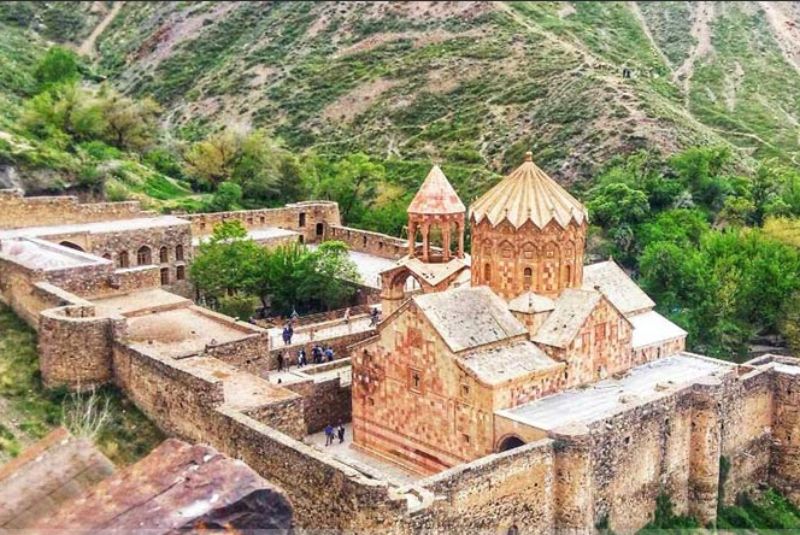
To reach the site, travelers can drive from Tabriz, the nearest major city, which is approximately 137 km (about a two-hour drive) from the monastery. For those not traveling by car, organized tours from Tabriz offer a convenient and informative way to visit the monastery and nearby attractions.
The closest airport is Tabriz International Airport, which is well-connected to other cities in Iran and international destinations. From the airport, visitors can hire taxis or use public transport to reach Jolfa and then make their way to the monastery.
The best time to visit the Monastery of Saint Stepanos is during the cooler months, particularly in spring (March to May) and autumn (September to November), when the weather is pleasant for sightseeing. Summers in this region can be quite hot, with temperatures often exceeding 35°C. When visiting, it is recommended to wear light, breathable clothing in summer, or layers during cooler months, along with comfortable walking shoes for exploring the site.
Entry Fees
The Monastery of Saint Stepanos charges a nominal entry fee for visitors. The standard ticket price is typically around 200,000 Iranian Rials. Students and foreign tourists may receive discounted rates upon presenting valid identification. Children under a certain age may be allowed entry for free.
Opening Hours
The monastery is generally open to the public every day from 9:00 AM to 6:00 PM. However, the hours may vary during religious holidays or special events. It is advisable to visit during the morning or late afternoon to avoid the midday heat, particularly in summer. While the site remains open throughout the year, some areas may be restricted during maintenance or renovation works, so checking in advance with local authorities or tour operators is recommended.
Guided Tours
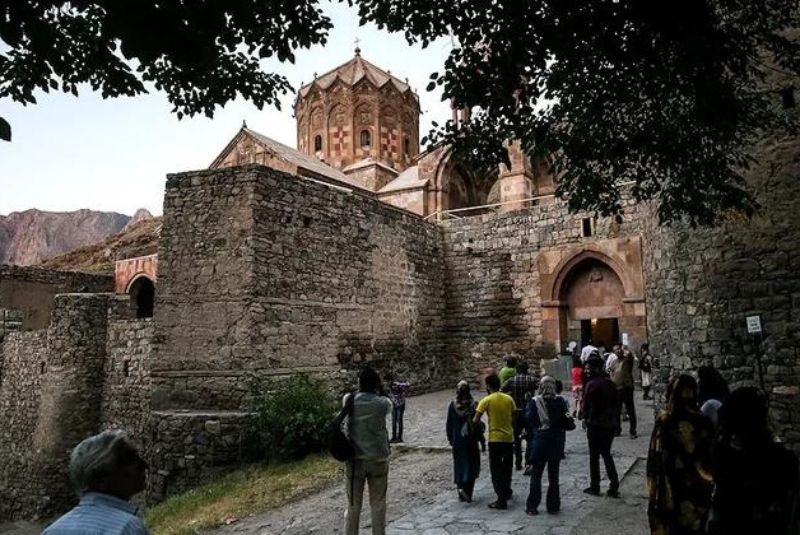
English-speaking guides are available for hire on-site, providing detailed historical and cultural insights into the monastery. These tours usually last about an hour and offer visitors a deeper understanding of the religious and architectural significance of the complex. For those who prefer to explore on their own, there are informative signs placed throughout the monastery in both Persian and English.
Visitor Etiquette and Dress Code
As a religious site, visitors are expected to dress modestly and behave respectfully. Men and women should wear clothing that covers their shoulders and knees, and women are required to cover their heads with a scarf while inside the monastery. Additionally, visitors are encouraged to maintain a quiet and respectful demeanor, especially when religious services are taking place.
Saint Stepanos Monastery Nearby Attractions
Saint Stepanos Monastery in Jolfa, there are several nearby attractions you’ll enjoy visiting. These sites provide travelers with opportunities to experience the unique landscape, architecture, and culture of the area.
Jolfa’s Aras River
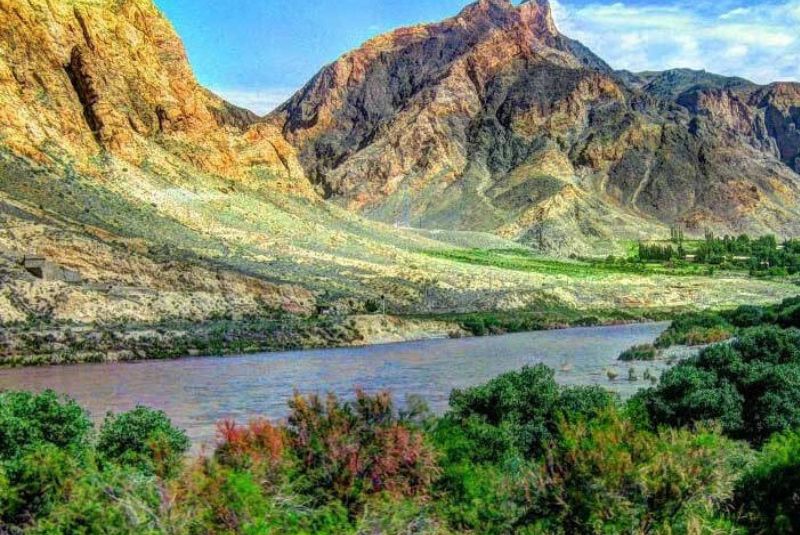
Located close to the monastery, the Aras River forms the natural border between Iran and Armenia. This scenic spot is ideal for nature lovers, offering beautiful views, peaceful walking paths, and shaded areas perfect for a picnic. The riverbanks provide a tranquil atmosphere where visitors can relax and take in the surrounding mountainous landscape. It's also a popular spot for birdwatching, especially during migration seasons.
Chupan Chapel
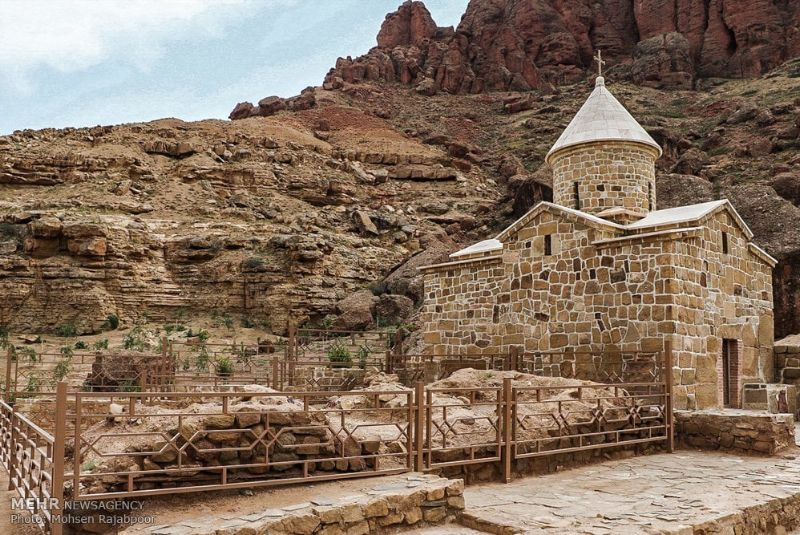
A short drive from the Monastery of Saint Stepanos lies the small, lesser-known Chupan Chapel. This ancient Armenian chapel offers a more intimate and serene experience for those interested in religious architecture. While less frequented by tourists, its simple yet elegant design showcases the enduring Armenian Christian presence in the region. It’s an ideal stop for visitors seeking a quiet moment of reflection amidst history.
Khajeh Nazar Caravanserai

A visit to the restored Khajeh Nazar Caravanserai provides insight into the region’s role in the historic Silk Road trade routes. The caravanserai, located along the Aras River, was once a vital stop for traders traveling between Persia and Armenia. The stone structure has been carefully restored, allowing visitors to experience what life was like for merchants and travelers centuries ago.
Kordasht Bathhouse
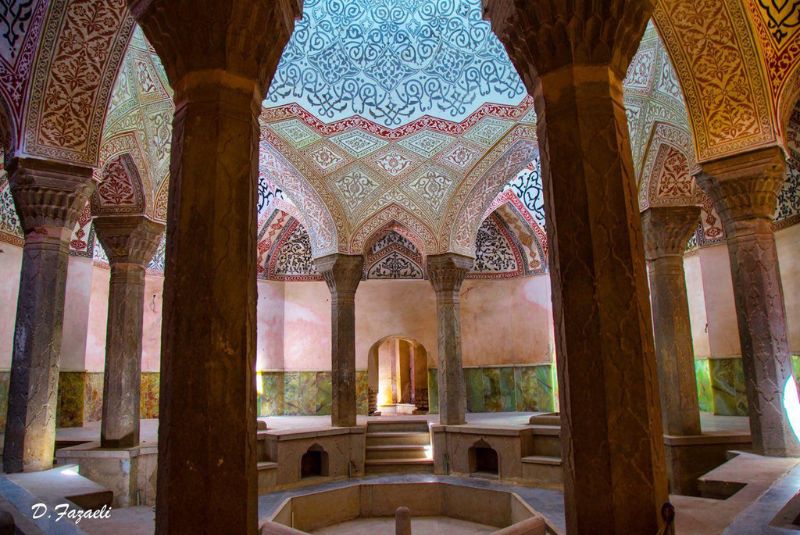
Near Jolfa, the Kordasht Bathhouse is a beautiful example of Persian architecture. This historic bathhouse, with its intricate tilework and vaulted ceilings, demonstrates the luxurious design of traditional Persian baths. Visitors can walk through the chambers and learn about the importance of bathhouses in Persian social and cultural life.
The Historic City of Tabriz
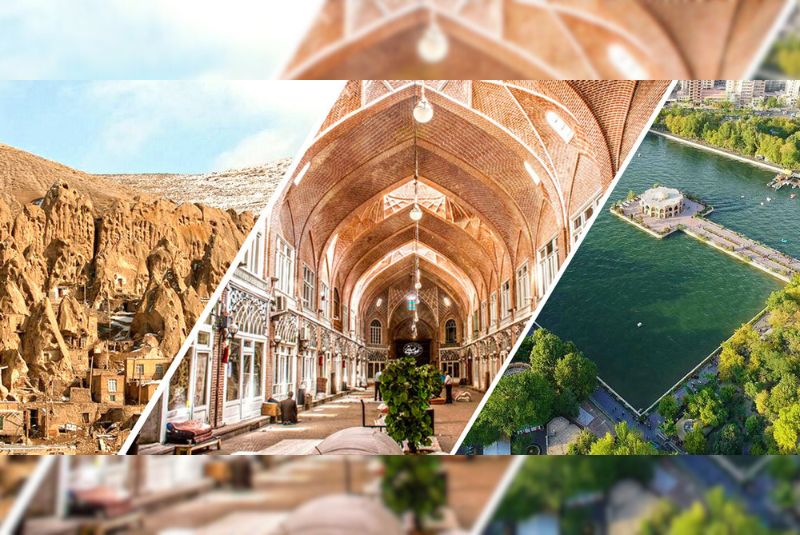
About two hours from Jolfa, Tabriz is one of Iran’s most culturally rich cities. Tourists can explore attractions such as the Blue Mosque, renowned for its stunning tilework, and the bustling Tabriz Bazaar, one of the oldest bazaars in the Middle East. El-Gölü Park, with its picturesque lake, is a peaceful retreat for those who enjoy nature within a city setting.
Final Takeaway
The Monastery of Saint Stepanos significance in the Armenian Apostolic Church and its unique position as a UNESCO World Heritage Site provide travelers with an unforgettable experience of cultural exploration.
Make sure to plan your visit, explore this remarkable site, and immerse yourself in the beauty and history of northwestern Iran.
Share your story!
Comment below and let us know about your Experience.
Your story inspires others!


Comment
Leave a Comment